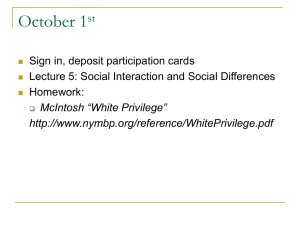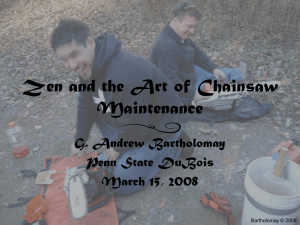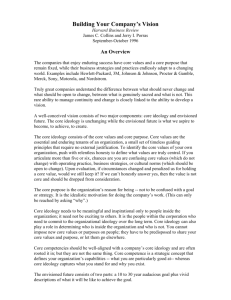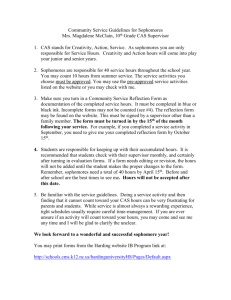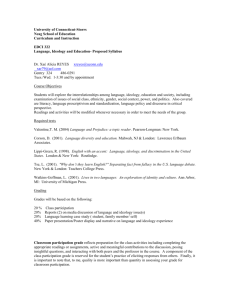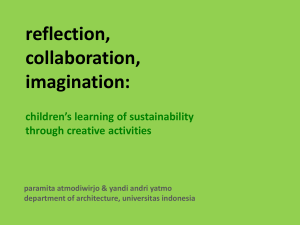Social theories II – Lecture Two
advertisement
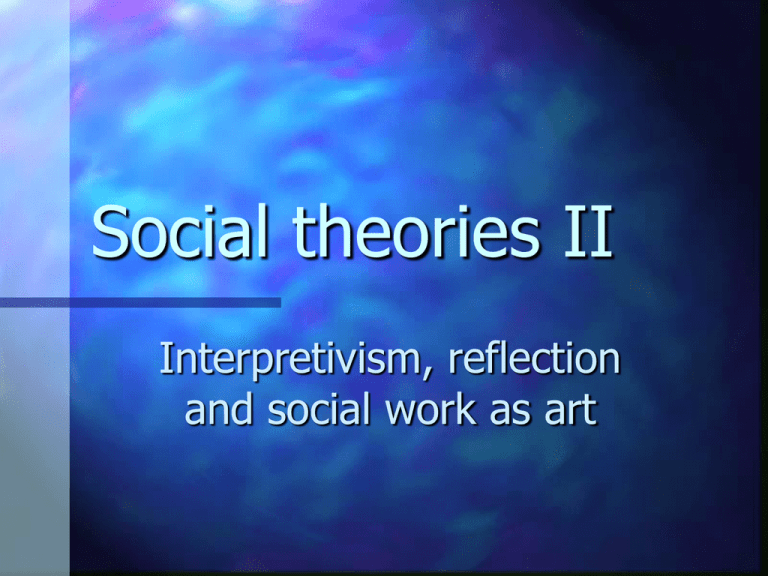
Social theories II Interpretivism, reflection and social work as art In this lecture, we will: Review the meaning of “interpretivism” Examine the claims of Social Work to be an “Art” Discuss the notion of “common sense” Explore ideas of Creativity and Holism Relate these ideas to practice examples What is Intepretivism? We can only understand human beings, groups and society by exploring the “meanings” people attribute to any event or phenomenon There is no single view of the world Individuals “construct” their own view of actions and events This has become connected to discourse theory and supports the notion of social work as an “art” An Example from Child Abuse Studies Approaches to Screening for Child Abuse and Neglect (1988) Kevin Browne and Sarah Saqi Follow up study of 14238 children born in North East Surrey in 1984 Identified a whole range of risk factors: Not planned / not wanted; born early; born with difficulties; age of mother; status of father; parental history of abuse/ neglect/ public care; poverty This produces a target group of risk ratings Follow up after two years…..but with limited correlation outcomes. Why does “science” not work? So, what had happened? The researchers interviewed the “false positives” (those who “should” have damaged or neglected their infants, but did not) What had happened? For this group, in spite of the loss of income, the fatigue, the stress, the tedium, the pain, the shock, the limitations on independence, freedom, choice …..they associated being a parent with a major change for the better. The gains massively outweighed the losses. Parenting was perceived to have given their life “meaning” and a “purpose”. Yet many of these were people who should – on paper – have failed. How is Social Work an Art? Emphasis on intuition, experience, “being there”, the crucible of communication “Casework” is the vehicle for interaction: the interpersonal encounter is rooted in the worker’s use of Self, or Personhood This links to an idea of performance, on the part of the service user and the practitioner: both are playing roles (the crux of symbolic interactionism) Knowledge helps – not to prescribe a formulaic, mechanistic intervention – but to create meaning. What Do We Mean By Common Sense? “All professions are conspiracies against the laity” GB Shaw Traditionally, professions acquire their status by creating a discreet body of knowledge that is beyond the layperson, and removes them from playing a part Perhaps, England (1986) is referring to the vitality of keeping “the common touch” Avoiding the pitfalls of professionalisation does not mean being amateur. Creativity and Holism The tool of the worker is her own self and creativity Intuition is a core attribute, about oneself and the other(s) Workers are not painting a picture….they are in it Thus, we are not observing testable hypotheses, under laboratory conditions, but we are engaged in a living, creative dynamic We have to address things holistically, not sequentially We have to engage the creative powers of our clients. But how? Meaning and Understanding Core concept: Empathy (so links with person – centred and humanistic counselling) “Understanding Others” (England, 1986), “verstehen” (Weber(1892) This is about shared understandings and a shared journey (see the works of Brandon, such as Zen in the Art of Helping (1976) “I sit on a man’s back, choking him and making him carry me, and yet assure myself and others that I am very sorry for him and wish to ease his lot by all possible means – except by getting off his back” Leo Tolstoy, cited in Brandon, 1976, Zen in the Art of Helping Practice Ideologies Hardiker’s model (1981) Judicial ideology – the administration of justice and social policing Community development ideology – work and change community / social systems Welfare ideology – a personal, interactional service, based upon professional relationships Reflective Practice and Practice Wisdom This concept recognises the learning that emerges from doing and the difference between reflection in action (in situ) and reflection on action (post hoc), supported and aided by consultation, supervision and mentoring BUT……. How does this fit with the coercive, policing, authoritative mandate for Social Work?
